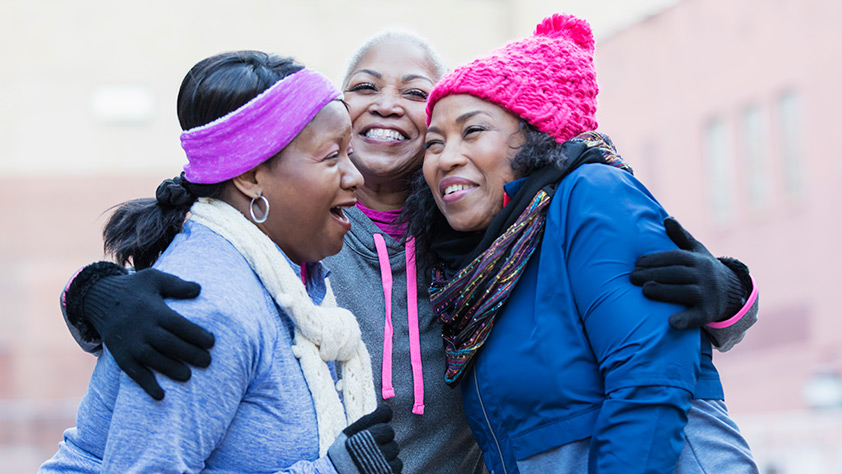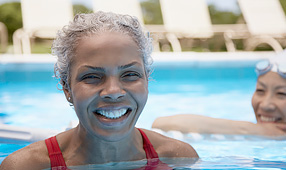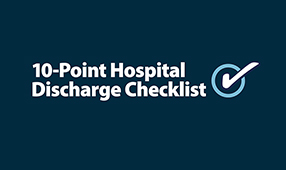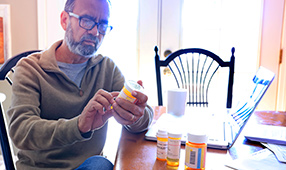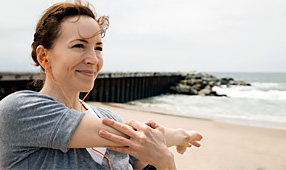Winter may appear pure, white and peaceful, but hazards often lurk in the brisk, frosty air.
“Viruses like the common cold and flu thrive during the winter months,” says Steve Quach, M.D., chief medical officer at University of Texas Medical Branch Health System in Galveston, Texas. “When it’s cold outside, people spend time together indoors, and that’s when transmission of these infectious diseases happen.”
But colds and flu aren’t the only threats this time of year. In fact, studies show that bronchitis, heart attacks, asthma attacks and even broken hips seem to spike when it’s cold outside. So while you’re navigating winter’s wonderland, watch out for these six seasonal threats:
1. Colds. Americans contract a whopping 1 billion colds every year, and educators are especially vulnerable because they’re constantly exposed to sick kids, germs and end-of-semester stress. “Stay away from people who are sick, and wash your hands,” urges Quach. Viruses spread when infected cough or sneeze droplets move through the air, or when you touch contaminated surfaces and then touch your mouth or nose.
The Centers for Disease Control and Prevention (CDC) recommends washing hands with soap and warm water for 15-20 seconds, or about the time it takes to sing the “Happy Birthday” song twice. And make sure the kids in your class have access to running water and soap or hand sanitizers.
2. Flu. Flu infections are responsible for 36,000 deaths every year—and winter is peak season. Cooler air and less daylight spur viruses to replicate after lying dormant during the warmer months. Get a flu shot, or take a whiff of the alternative FluMist, and regularly rinse your nose with saltwater to prevent viruses from taking hold. Then keep your immune system strong by maintaining a healthful sleep, diet and exercise regimen.
“Raising your core body temperature through exercise may help ward off bacteria and viruses,” because they can’t survive in a warm environment, says Amy Hendel, PA, author of The 4 Habits of Healthy Families. Keeping a humidifier in the classroom may help, too: Dry mucous membranes in your nose and throat can crack, creating a place where viruses can enter the body. As with colds, stay away from people who are sick, and wash your hands frequently.
3. Bronchitis. A catch-all term, bronchitis describes inflammation of the bronchial tubes that carry air to your lungs. You may have a cough that brings up mucus, find yourself wheezing during a lecture, and suffer from chest pain, fever and shortness of breath. “Bronchitis is similar to the common cold,” Quach says. “It just travels down into the lungs.”
His advice: Take the same steps you would take to prevent a cold or flu, and bolster your immune system by eating right, exercising and getting enough sleep. Also avoid lung irritants such as tobacco smoke, including secondhand smoke, dust, fumes, vapors and air pollution.
4. Asthma. “The No. 1 trigger for asthma is respiratory infection like the common cold or flu,” Quach says. To avoid an attack, keep indoor air clean by wiping down surfaces regularly and using a HEPA air purifier. People spend more time indoors during the winter and therefore more time surrounded by—and breathing in—indoor allergens and cold and flu germs.
Taking steps to maintain your health is key. When you’re outside, protect your lungs from the cold air by loosely wrapping a scarf around your nose and mouth to warm the air you breathe. And if your asthma flares when you exercise in cold weather, talk to a doctor about using an inhaler 10-20 minutes before you get moving.
5. Heart attacks. When you’re cold, your blood vessels constrict to retain body heat and blood pressure spikes, placing added stress on your heart. Couple your heart’s natural inefficiency when it gets chilly with strenuous activities such as shoveling snow or chasing after children, and you can trigger a heart attack. Studies show a sudden increase in heart attacks after blizzards, especially if the snow is wet and heavy.
If you must pick up a shovel, warm up the body first with a few stretching exercises, and take frequent breaks. In addition to shoveling, any physical exercise is hard on the heart during the winter, especially if you’ve been in an exercise lull.
6. Falls. Falls are more common when it’s cold, thanks to slippery ice and powder packed snow. To get through the season unscathed, make sure you’re aware of your environment—black tops can be particularly hazardous—and watch where you step.
“People who are older and who have less muscle tone and strength need to be especially cautious,” Quach says. Not only are seniors at higher risk of falls, they’re also more likely to suffer complications (such as a broken hip) when they do take a tumble. Quach recommends searching out comfortable shoes that have grip on the sole as opposed to shoes that are completely flat.
